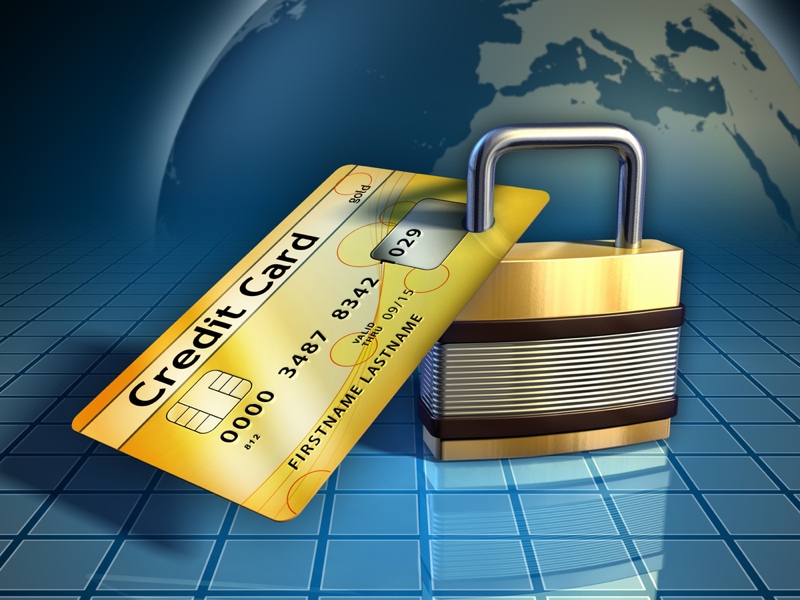Nano Webs Could Counterfeit-Proof Credit Cards

Money, gadgets and credit cards could soon have tiny, invisible anti-counterfeiting "fingerprints" embedded into them, making it pretty much impossible to falsify such objects, say scientists.
South Korean researchers have developed tiny tags made of silver nanowires that are randomly scattered, then form a unique pattern — just like the one-of-a-kind designs in each spider web.
The research is "an important and inspiring idea to use nanotechnology for anti-counterfeiting," said Zhao Qin of the Massachusetts Institute of Technology (MIT) in Cambridge, Mass., who was not involved in the study.
More than $178 million worth of counterfeit products were seized at the U.S. border in 2011, according to the Department of Homeland Security.
For years, researchers have sought ways to fight counterfeiting, with many methods currently under development in labs around the globe. The technologies range from invisible woven patterns to printing techniques inspired by butterfly wings to synthetic DNA. But many of these approaches are complex and costly. [7 Cool Animal-Inspired Technologies]
The group from the Korea Advanced Institute of Science and Technology (KAIST), however, has proposed a much simpler method, described in the March 20 issue of the journal Nanotechnology from the Institute of Physics.
Random dumping
Get the world’s most fascinating discoveries delivered straight to your inbox.
First, the scientists created a solution with silver nanowires, each wire only about 10 to 50 microns — a millionth of a meter — long. The average human hair is 18-80 microns wide.
The researchers coated the wires with silica and doped them with fluorescent dyes, making them visible when analyzed with a fluorescence microscope. The scientists then placed drops of the solution onto a thin plastic film, randomly arranging some 20 to 30 nanowires within the drops.
The team analyzed the dried drops with a microscope, imaging the wires — invisible to the naked eye — in the process. Using a special algorithm to note the positions and colors of the wires, the researchers compared the wire patterns with a signature stored in a database, which was obtained at the fingerprint's creation. If the two matched, it meant that the product was not a fake. [Magnificent Microscope Images: 50 Tiny Wonders]
The researchers say that to help locate the reference print-data in an online database, the fingerprint could be tagged with a unique barcode. While counterfeiters could conceivably reproduce that barcode, there would be no point in doing so, since the reference-print itself would not match up.
"Once a pattern is tagged and stored on a database using a unique ID, a certain substrate, whether this is a bank note or a credit card, could be authenticated almost immediately by observing the fluorescence images and comparing it with stored images," said lead scientist Hyotcherl Ihee.
"These authentication processes can be automated by employing an algorithm that recognizes the positions and colors of the silver nanowires and digitizes that information in a database. Such digitized information could significantly reduce the size of the stored data and reduce the time required for the authentication process."
The scientists believe that it is nearly impossible to replicate the fingerprints, because the nanowires are so tiny and tricky to manipulate into a specific pattern. "The cost of generating such an identical counterfeit pattern would generally be much higher than the value of the typical product being protected," said Ihee.
However, creating each original print would be relatively easy and would cost less than $1, the authors said. "The point is that it is so easy to make a pattern. Just use a drop of nanowire solution. Even a normal customer or seller can make their own."
Scanning spider webs
Qin of MIT agreed. "They have shown in their work that the nanowires and nanoparticles can form complex patterns with true randomness during the preparing process of the sample, probably because of the complex flow and random motion that are difficult to be reproduced," he said.
"Therefore, these patterns are much superior to the barcodes that are currently widely used for products, making counterfeiting almost impossible."
The method included in the paper was inspiring, he said, as the complex, random pattern can be generated from nanostructures and many other sources, for example, structures like cytoskeletons, surface fragmentation and spider webs that are randomly organized, and found in nature. Researchers could scan those patterns and store them in a database.
"Those patterns with high complexity and true randomness will make counterfeiting extremely difficult, if not impossible," said Qin.
Follow us @livescience, Facebook & Google+. Original article on Live Science. Follow the author on Twitter @SciTech_Cat.


